Near the beginning of her new book, Biased, researcher Jennifer Eberhardt tells a story about traveling with her then five-year-old son on an airplane. When he points out another black passenger on their plane and wonders aloud if the man might rob someone, it stops Eberhardt cold.

“Why did you say that?” she asks him, not reprimanding but curious. He responds, “I don’t know why I said that. I don’t know why I was thinking that.”
This story aptly illustrates one of the main themes of her book: No one is immune from bias. Not even her black son can escape the cultural messages that equate “black male” with “dangerous.” Bias is not the exclusive realm of racists or bad actors, she writes, but a deeply ingrained part of the way we experience the world.
Combining storytelling with a deep dive into the science of implicit bias, Eberhardt explains how bias and prejudice form—and she describes their pernicious effects on all of us. But she doesn’t stop at the problem: Her book shines a spotlight on what we can do to fight bias at a personal and institutional level.
“At its root, bias is not an affliction that can be cured or banished,” writes Eberhardt. “It’s a human condition that we have to understand and deal with.”
Why our brains encourage bias
Bias is a natural byproduct of the way our brains work, writes Eberhardt.
First, babies naturally learn to distinguish faces of their own racial group better than faces of other groups because their perceptions are shaped by what they see most often. Our minds also categorize objects in our world, helping us to ignore or take for granted what’s familiar and attend to what’s novel. This capacity allows us to make sense of all the information coming through our senses and to differentiate between what’s safe and what’s not safe.
“Our experiences in the world seep into our brain over time, and without our awareness they conspire to reshape the working of our mind,” she writes. The problem lies with how this can lead to categorizing people as “good” or “safe” versus “bad” or “unsafe,” based on familiarity. Coupled with social stigmas surrounding different groups of people, this tendency is a recipe for prejudice.
Eberhardt traces a long line of research showing racial bias plays a role in everything from how teachers treat their students to how employers make hiring decisions to what neighborhoods a person can find a place to live in. In the U.S., for example, cultural stereotypes of “angry black males” can lead people to misinterpret emotional expressions on black faces and see anger or threat that isn’t there. Additionally, ambiguous actions are seen as more violent when taken by a black person than a white person.
Even when we encounter information that would suggest the stereotype is wrong, says Eberhardt, we tend to overlook or dismiss that information, because we find it more comfortable keeping our entrenched beliefs than changing our minds.
“Whether bad or good, whether justified or unjustified, our beliefs and attitudes can become so strongly associated with the category that they are automatically triggered, affecting our behavior and decision-making,” she writes.
Children are particularly sensitive to how the adults around them react to other people, which has relevance in interracial interactions. Researchers have shown that when parents have an anti-black bias, children pick up on their nonverbal cues, making them more likely to be biased, too.
The ramifications of implicit bias
While lab studies uncovering deep veins of bias are fascinating and humbling, the real-world consequences are dire. For example, bias in the criminal justice system affects how politely police interact with suspects, whether they use force, and how likely it is that someone will be convicted of a crime.
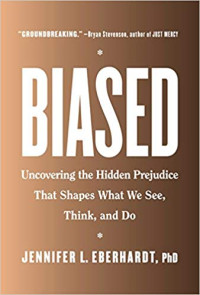 Biased: Uncovering the Hidden Prejudice That Shapes What We See, Think, and Do (Viking, 2019, 352 pages)
Biased: Uncovering the Hidden Prejudice That Shapes What We See, Think, and Do (Viking, 2019, 352 pages)
Police are subject to the same biases we all carry, says Eberhardt. Research has shown that when primed to think about crime, police officers shown a black and white face simultaneously will focus their gaze on the black face due to stereotypical associations between “blackness” and criminality. Police also tend to rate black men as taller, heavier, and stronger than white men who are otherwise the same build, suggesting black men are seen as more dangerous than white men and prompting officers to be more willing to use force to subdue them.
“Every encounter police officers and community members have with each other happens in a larger societal context that shapes how each responds,” writes Eberhardt.
In ambiguous situations, police more easily mistake an innocuous object for a gun when that object is held by a black versus a white person—no doubt tied to wrongful deaths. While training may help combat bias, Eberhardt admits she’s not always hopeful it can overcome it.
“I worried (and I still worry) that people put too much faith in the power of these trainings, which can educate but not eradicate the forces that keep officers primed for trouble and communities on edge,” she writes.
Biased treatment doesn’t just happen in policing situations, either—it plays out in schools and in workplaces, too.
Research has shown that teachers show implicit bias against their black students, expecting them to misbehave more than white students and enacting harsher punishments if they are caught. Similarly, employers often make unconscious decisions around not considering black applicants, leading some people of color to “whiten” their resumes—i.e., take out information that might distinguish their race. Discrimination can also lead to black workers being valued and paid less, discouraging their success.
The good news
It’s hard to find any silver lining in Eberhardt’s book, given her chronicling of all the injustices suffered by black Americans and the spate of police killings of unarmed black men. But she does point to some ways that we can work to reduce bias in ourselves and in our institutions.
First and foremost, she suggests educating ourselves about the history of discrimination and how that feeds bias, so that we can be more aware of its impacts in everyday life. Too often, people want to deny having bias, especially if they are strong proponents of social equality. But not recognizing bias’s widespread effects leaves us unprepared to confront police misconduct or the racially motivated attacks in Charlottesville.
There is some evidence that becoming aware of bias can help reduce it. Research suggests that recognizing that human traits are more malleable than fixed—that how people behave is somewhat dependent on environmental circumstances—decreases stereotyping. And a long line of research shows that increasing positive intergroup interactions where personal relationships can develop between people of different social groups can decrease bias, too, as long as the people involved are of equal status and of good will.
All of us tend to lean on our biases when we are forced to make decisions quickly and with not enough information, says Eberhardt. That’s why some police departments are reconsidering rules around how suspects are pursued and instituting new policies that slow down the process and allow for input from backup units. This could potentially prevent unnecessary deaths by reducing biased decision-making in the heat of the chase.
Eberhardt’s book is full of research, but she’s not dispassionate. She herself has been roughed up by police after a routine stop and was arrested without probable cause—a story that brings added urgency to her work. Also, as a mother of a black son, she worries about him living in a world where stereotyping could be dangerous for him. Yet, she doesn’t give up hope that people of good will coming together can do something constructive to combat bias.
“With an awareness of how bias operates, we trade our innocence for protection,” she writes. “We open our minds to the personal growth that comes with diversity. And each day provides us with a new opportunity to practice being our best selves.”

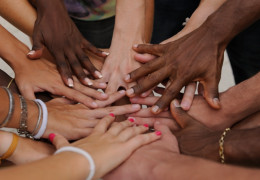

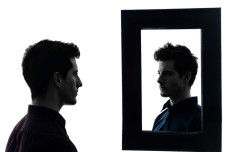


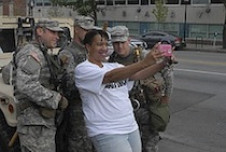

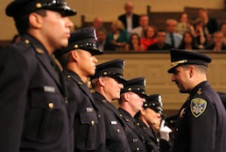
Comments